|
Charts
IMPORTANT: Chart buy/sell signals are helpful in determining market support and resistance levels...and probable turning points. However, they are only useful if the analyst has a handle on the larger trend. Experience and judgment play a vital role in that determination ...as does Elliott wave analysis.
If a chart does not not appear when you click on the link, you may need to (1) enable javascript, and/or (2) disable pop up blocking for this site, or (3) right click on your mouse and open the link in a new tab or window. Charts will generally appear when you use Internet Exploer or Firefox. Do not use Google Chrome to view charts.
Contact us at info@wavechart.com if you have a question or comment. |
|

Elliott Wave Chart Blog March 2011 Archive
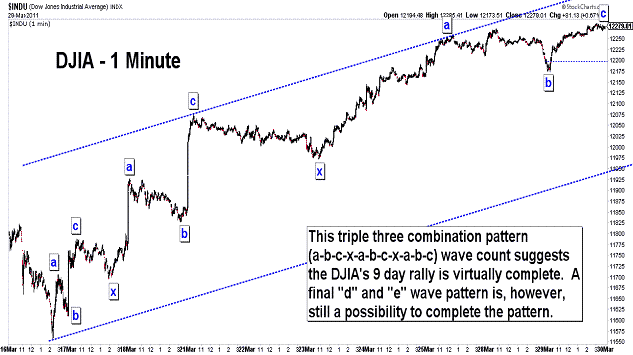
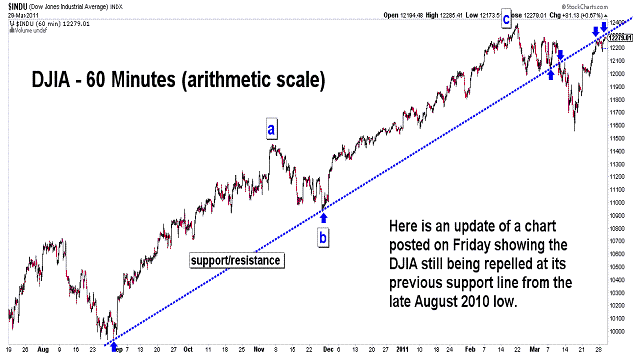
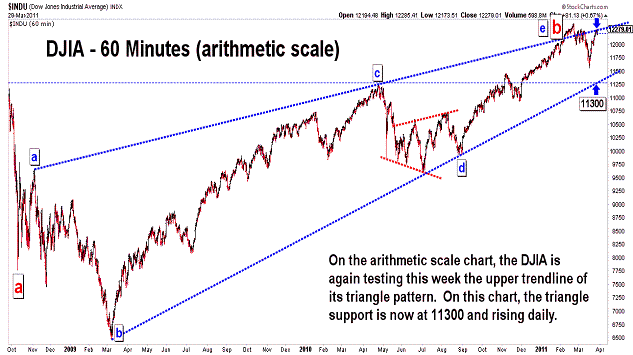
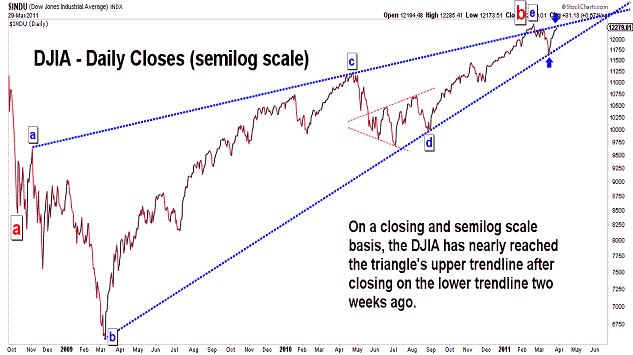
| March 29, 2011 update...There is not much to add to last Friday's update. The DJIA's nine day rally has continued to subdivide and may (under the wave count in the first chart) be in the process of completing a triple three combination pattern. The triangle's upper trendline (as shown in the third and forth charts) is critical resistance for the remainder of the week. If it is broken, the DJIA's February high could be retested, and possibly exceeded. We'll see. |
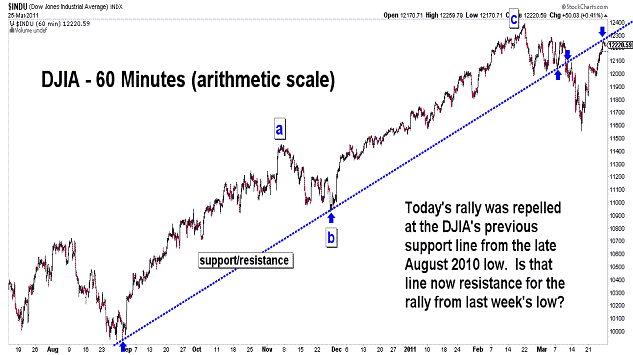
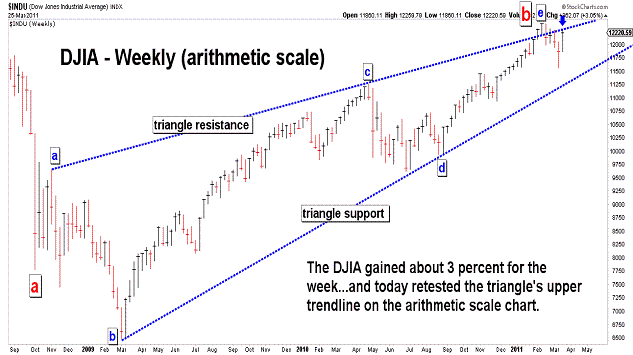
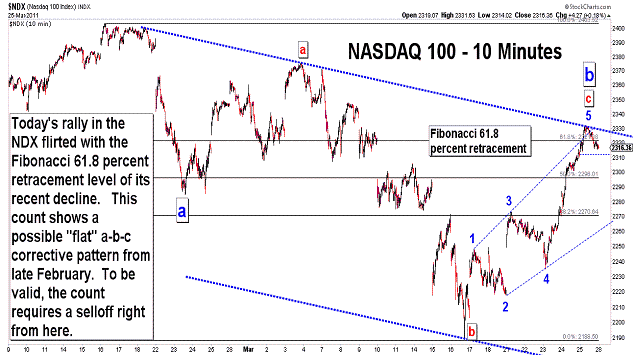
| March 25, 2011 update...The DJIA gained about 3 percent for the week; the NDX about 4 percent. Next week could be an important test of whether my "b" wave triangle count is still valid. As you can see on the weekly chart, the DJIA tested the triangle's upper trendline at today's high. I really don't think that line should be exceeded if the market has started a major decline from the February high. I'll wait until next week to address wave count options if that line is broken. On a personal note, a friend of mine keeps telling me that the FED will not let the market go down as I suggest should happen in the coming months. He believes they will just keep inflating the economy with more and more quantitative easing. I read an interesting blurb on elliottwave.com (click here to see it) that suggests otherwise. They say that "...By mid-2011, the Fed will have monetized just over $2 trillion worth of debt since 2008 to bring the value of its total assets to about $3t. This does represent a huge amount of fiat money. But the overall debt load is $65 trillion. Thus, the Fed will have monetized only 5% of the total, meaning that 95% of the outstanding debt is still suffocating the economy like a giant pool of sludge. The Fed s degree of monetization in light of these debts is very small." Take a look at the chart of debt/credit contraction on their website. |
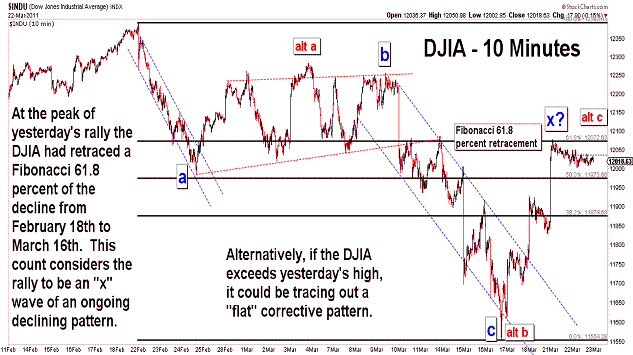
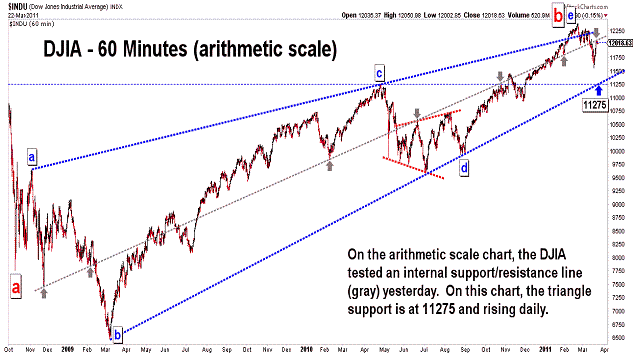
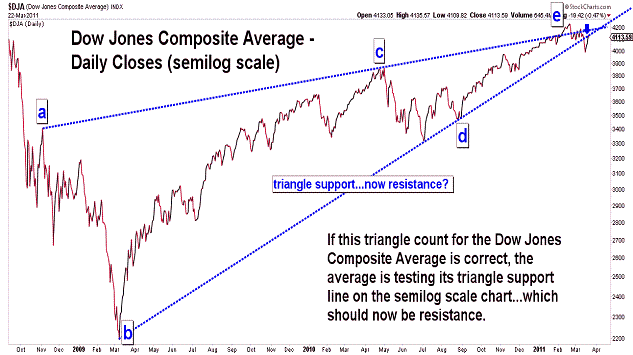
| March 22, 2011 update...At yesterday's high, the rally from the March 16th low reached the Fibonacci 61.8 percent retracement point of the February 18th to March 16th decline. Although the wave pattern here is subject to several different interpretations, this would be a good starting point for the next phase of the intermediate term decline that I am counting...based on the completion of a two year plus horizontal triangle pattern. On the downside, the next important support level below the March 16th low is the 11275 area. Once that level is broken, I would expect things to accelerate downward...as investors increasingly realize that the decline is more than a simple correction. |
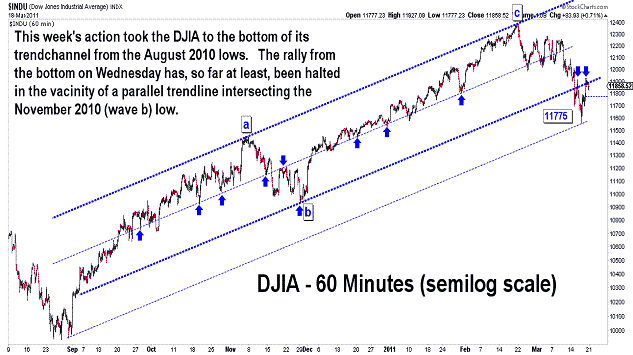
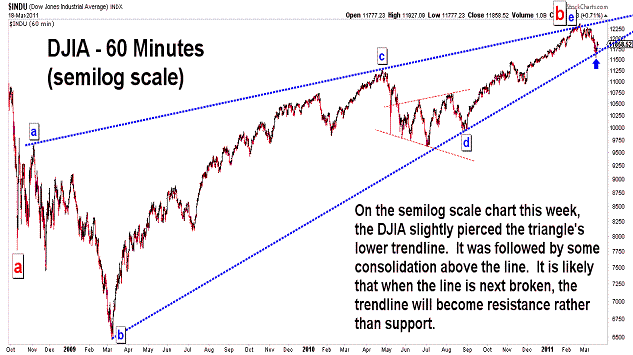
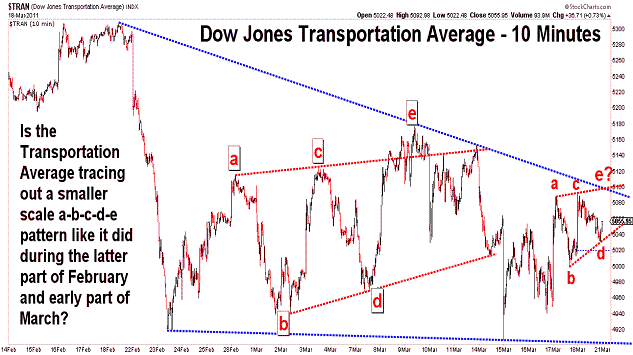
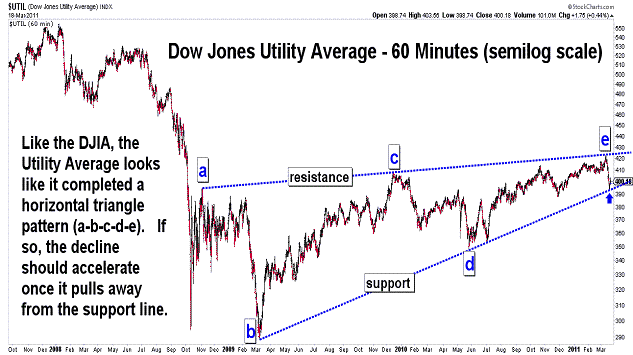
| March 18, 2011 update...The NASDAQ 100 was especially weak this week, declining almost 3 1/2 percent. In comparison, the DJIA was only down around 1 1/2 percent. On the semilog scale chart, the DJIA flirted with and slightly broke through its long term support trendline. The next decline below this week's low should take the DJIA to arithmetic trendline support, i.e., 11250-300 (see chart in Tuesday's update). It seems to me that the market is working strenuously as it has moved downward toward semilog scale (and then to arithmetic scale) support. I guess the accelerated part of the current intermediate term decline will have to wait until these lines are tested and broken. Patience will obviously be needed to capture all of the declines to come in the months ahead. |
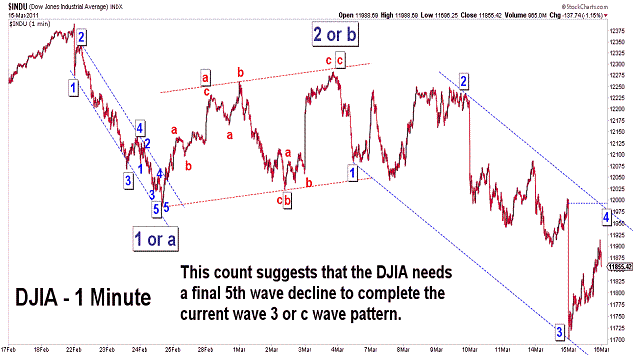
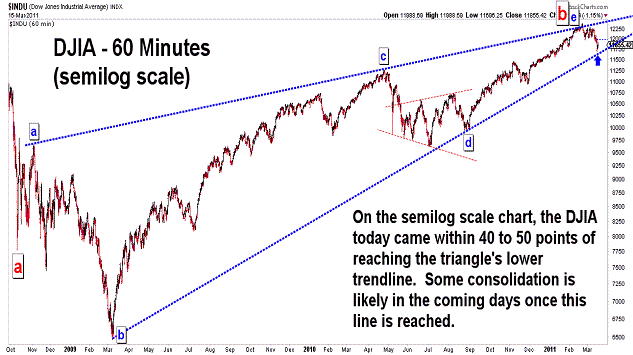
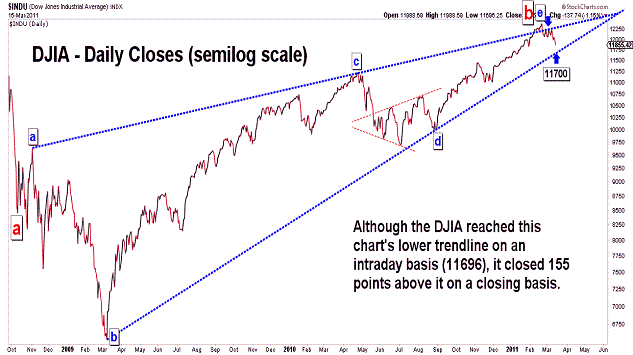
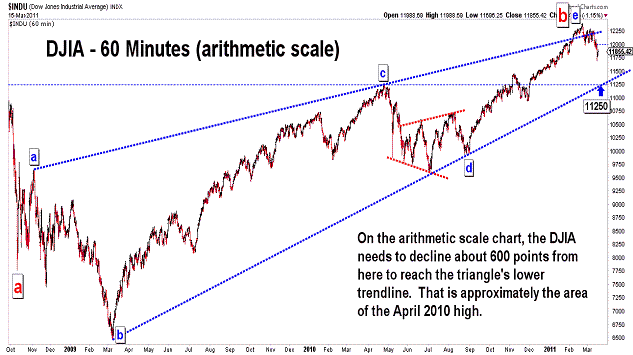
| March 15, 2011 update...Today's opening decline brought the DJIA very close (within 40 to 50 points) to the lower trendline of its triangle pattern on the semilog scale chart (see second chart above). The intraday recovery left the average at day's end about 155 points above the same trendline on the semilog scale closing only chart (see third chart above). Ideally, the trendline will soon be tested with a possible 5th wave decline from the March 3rd high. Certainly, it could also get there with an alternate wave count...but, in any event, I think it should reach that line before the next multi day consolidation pattern. Once that line is broken, a test of the trendline on the arithmetic scale chart should follow. By then, more of the the pattern of the current intermediate term decline should be developed...providing a better road map (hopefully) of the wave count that is unfolding. |
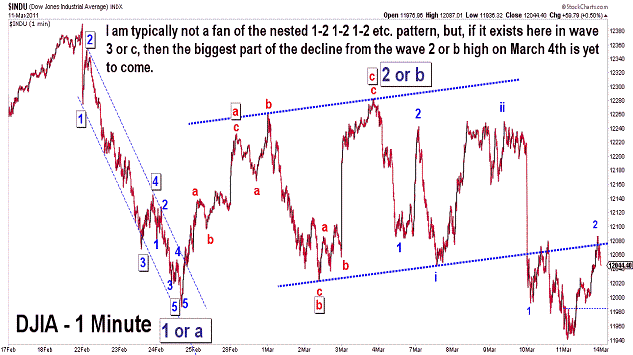
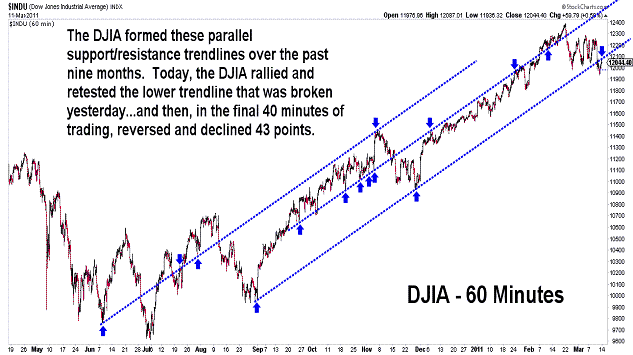
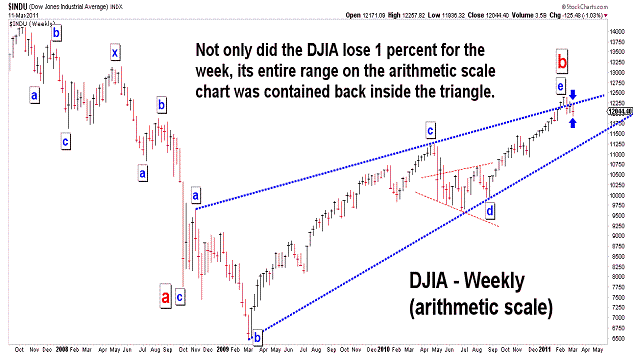
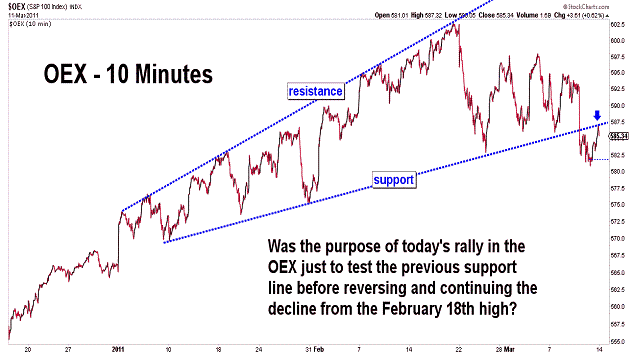
| March 11, 2011 update...In Tuesday's update, I indicated that the wave count suggested a significant decline was on the way. Yesterday, we did see a significant decline, however, the wave count that produced it is, in my opinion, not very clear. Today's modest rally took many of the indices, including the DJIA, back to test previous support lines that were broken during yesterday's selloff. The test appeared to be successful (i.e., previous support should now be resistance)...as the DJIA reversed course and declined duing the final 40 minutes of the session. For the week, the DJIA declined about 1 percent and the NASDAQ about 2 1/2 percent. Further proof (one way or the other) that an intermediate term decline has begun should occur on Monday. Hopefully, as more of the currently unfolding pattern develops, the wave count will become more definitive. |
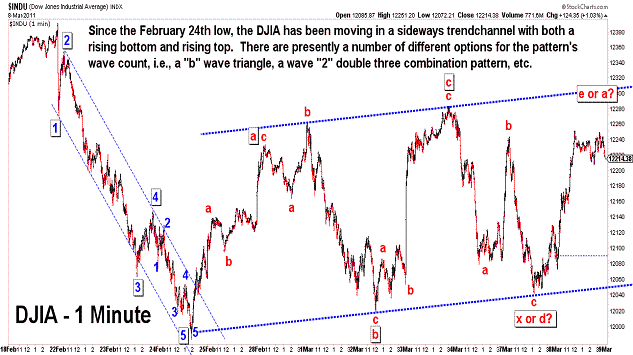
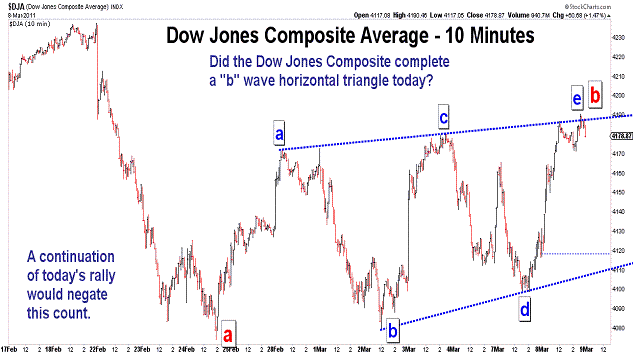
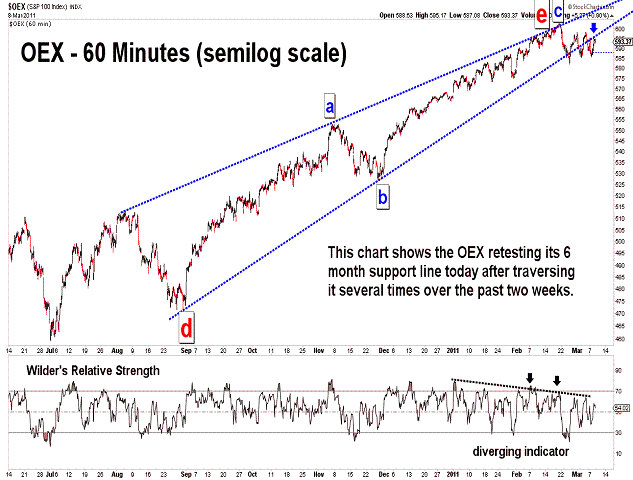
| March 8, 2011 update...If the market began an intermediate term selloff at the February 18th high, now would be a good time (chartwise) to start the next phase of the decline. The Dow Jones Composite Average, for example, appeared to complete a horizontal triangle pattern today. If so, it should start a significant and persistent decline tomorrow. If, on the other hand it continues to rally, the triangle pattern would be negated...leaving numerous other short term options on the table. Let's see what happens tomorrow before discussing what all those other options are. |
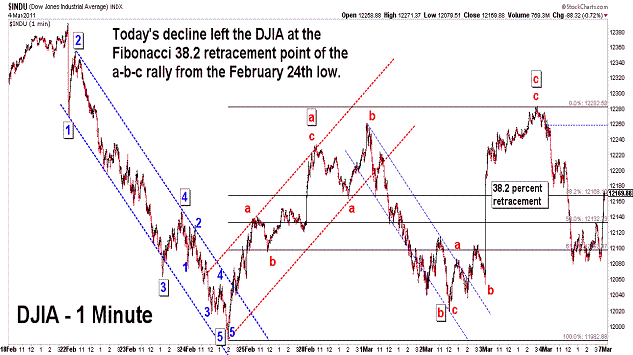
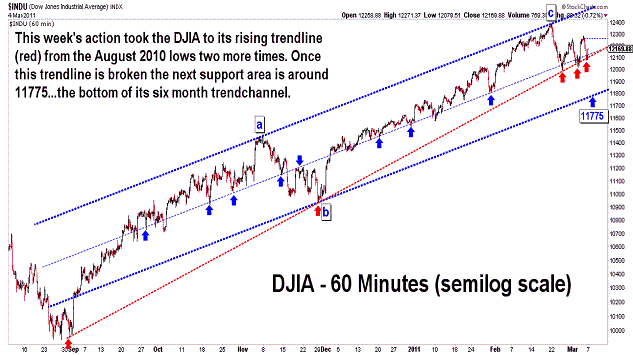
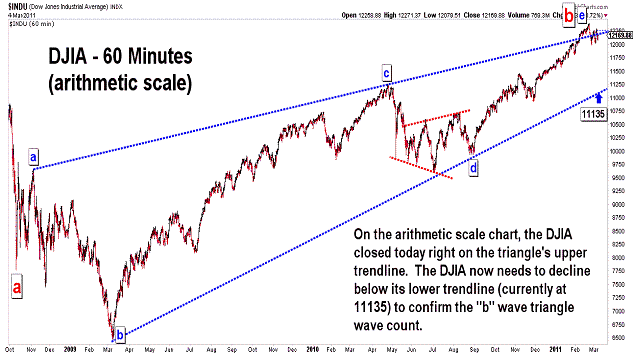
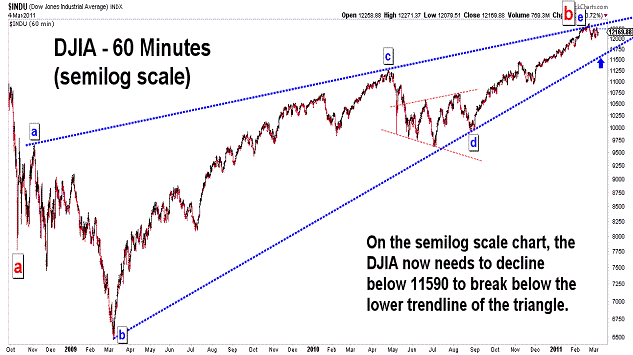
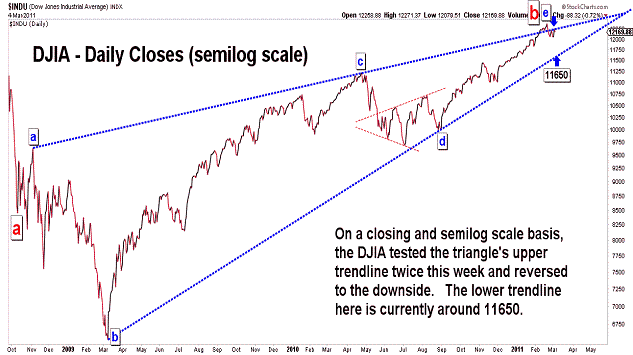
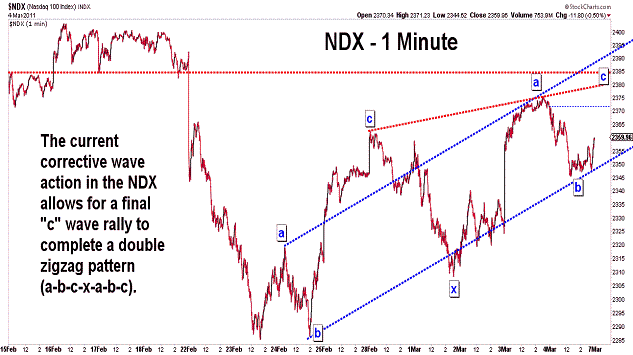
| March 5, 2011 update...The DJIA appears to have traced out an a-b-c corrective wave this week. If so, the next phase of an intermediate term decline from the February high should be confirmed when Friday's low (12079) is broken. Initial target should be the 11650 to 11775 area. |
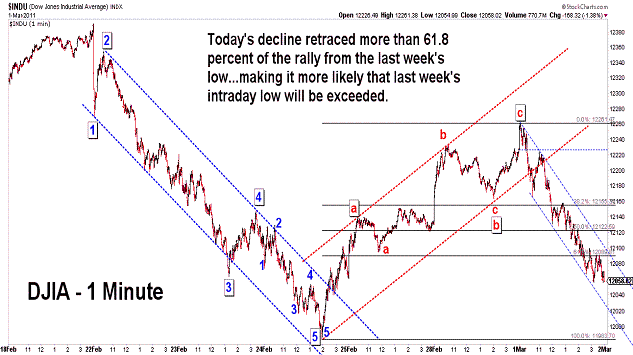
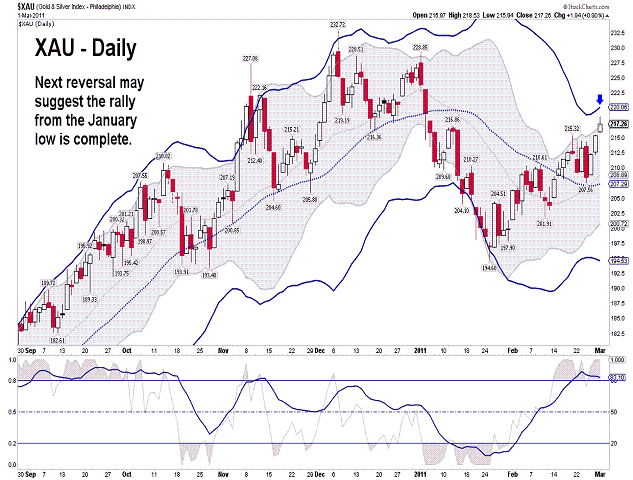
| March 1, 2011 update...The DJIA closed below last week's lowest close. Now we need to break below 11983, the intraday low. But, even if that happens, it is not yet clear whether this decline is the beginning of the next phase lower...or just a "b" wave decline within an a-b-c corrective wave. Gold/silver (XAU) did not reverse today. I think a reversal there would help convince me that the DJIA's intermediate term decline has resumed. |
Important: Information and chart access provided herein is limited to current subscribers only and shall not be forwarded or retransmitted without written authorization. It is educational in nature and shall not, directly or indirectly, be construed as investment advice. No guarantees are made with respect to the accuracy of the information, opinions, predictions,etc. offered here in. The username/password provided to a subscriber is unique and it is the sole responsibility of the subscriber to protect the confidentiality of said username/password and to further protect it from any unauthorized use.
Copyright © 1997 - 2013. The Elliott Wave Chart Blog. All rights reserved. Email
|